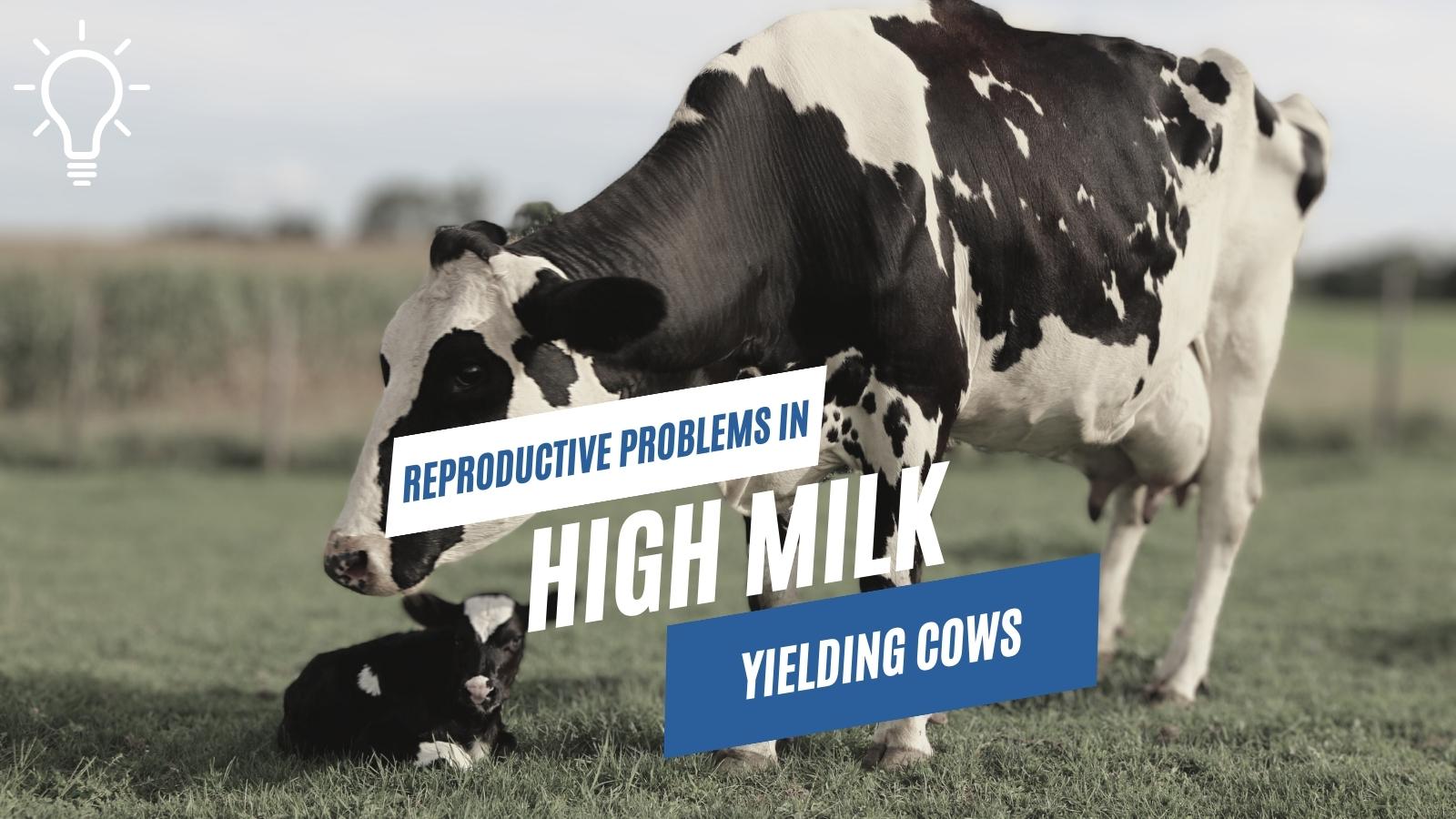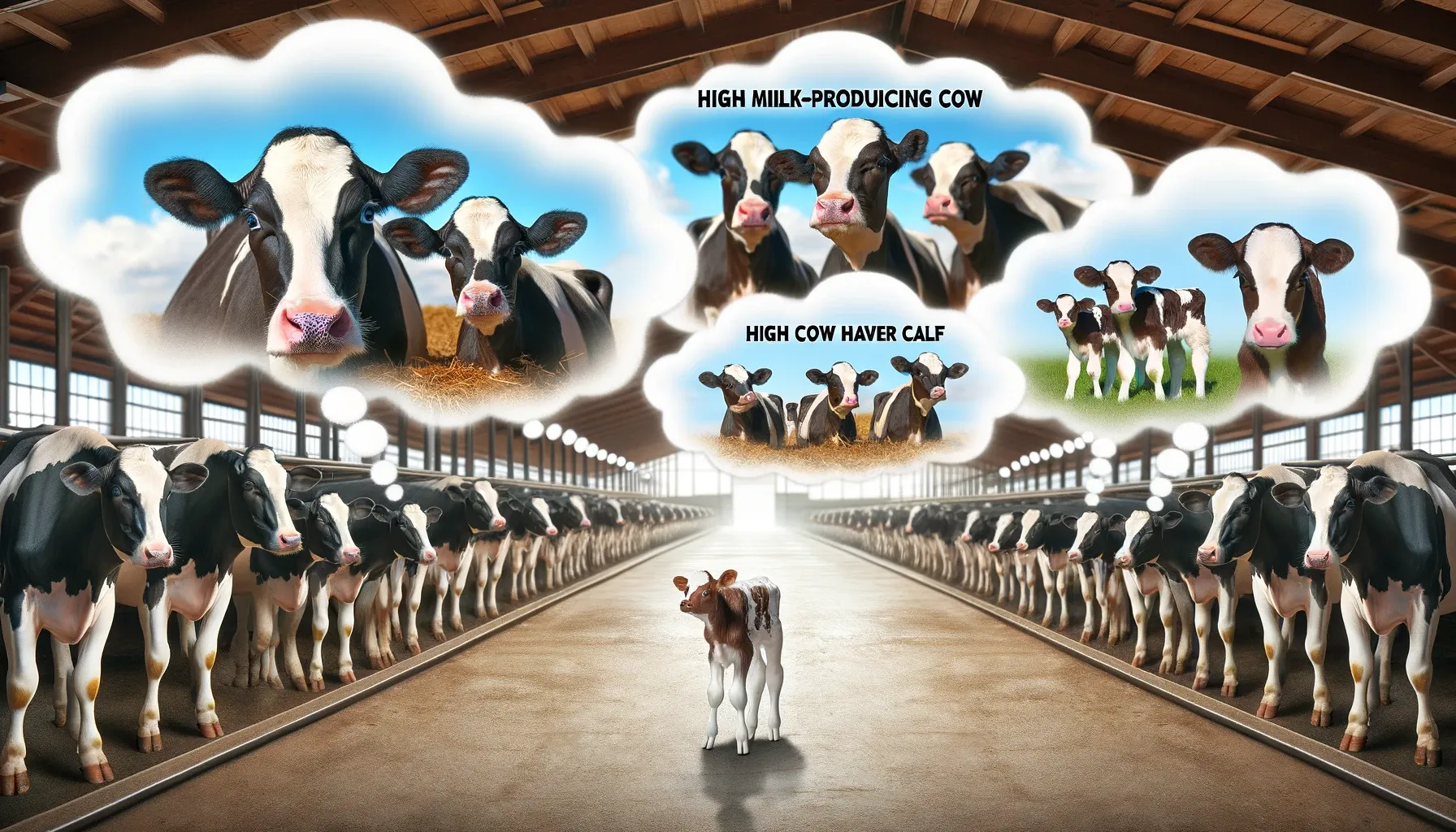Reproductive Problems in High Milk-Yielding Cows
A significant portion of the world's milk production is undertaken by cows. While efforts to increase the amount of milk per cow are targeted, it has been observed that this increase also raises the incidence of reproductive problems. This article details the reproductive issues in high milk-yielding cows. milkingcloud.com offers solutions that can be beneficial in the monitoring and management of these problems by using tools such as pedometers and step counters.

Compared to other domestic animals, cows have a superior milk production capacity, which meets a large part of the world's milk needs. This necessitates intensive genetic breeding efforts to obtain more milk. The step counter and pedometer features on milkingcloud.com offer significant tools for monitoring and managing the effects of this genetic progress on cows. The observed decrease in reproductive performance with increased milk yield in dairy cattle poses a significant challenge for farm management. Tracking the mobility of cows can play a vital role in early detection of health issues such as mastitis symptoms and overcoming reproductive problems, technologies offered by milkingcloud.com.
Begin Your Journey for Free!
Discover the Full Potential of MilkingCloud for Free!
Enjoy all features with a free plan, tailored for your herd size. Get Started Today!
The genetic selections made to achieve high milk yield have been associated with a decrease in fertility in these cows over the past 20 years. The decline between milk yield and the pregnancy rates after the first insemination post-calving has shown an average decrease of 0.5% to 1% per year. This decrease in fertility is not only related to milk yield but also connected to various stress factors such as genetic factors, heat stress, and poor housing design. Especially in cow farms, the management of this decrease in fertility in high milk-yielding cattle can be made more efficient with the technological solutions of milkingcloud.com.
Cystic ovary syndrome emerges as the most common reproductive irregularity in dairy cattle and is one of the main reasons for low fertility. While the diameter of follicles in cattle varies between 8-15 mm, follicles larger than 20 mm may indicate cystic conditions. Although the causes of this condition have not been fully understood yet, the hypothesis of insufficient GnRH release from the hypothalamus along with an increase in estradiol levels is a widely accepted theory. The failure of the anterior pituitary to release LH before ovulation in cows, and the resulting lack of ovulation, can lead to the formation of cystic conditions. The mating of cows and their mating processes play an important role in managing this decline in yield. Monitoring the mating process in cows is critical for herd management and fertility programs.
The use of step counter and pedometer technologies in managing reproductive problems is important for monitoring cows' mobility and detecting abnormal movements. These technologies can assist in identifying cows showing estrus signs, monitoring ovulation periods, and correctly timing insemination. milkingcloud.com's technology plays an important role in providing real-time and accurate data for fertility management and increasing farm productivity.
Effects on Estrus and Ovulation
In modern dairy farming, not showing estrus (heat) is one of the most frequently encountered reproductive disorders in high milk-yielding cows. For the observability of estrus behavior, the systemic level of estradiol 17β hormone produced by the pre-ovulatory follicle needs to rise. Metabolic deficiencies associated with high milk yield can make it difficult to observe estrus behaviors by causing low levels of estradiol and progesterone hormones. Since the measurement of these hormones under farm conditions is challenging, the use of technologies like step counters is of great importance in monitoring the behavioral changes of cows. These technologies can assist in determining the times of estrus and ovulation.

Negative Energy Balance and Reproductive Health
The first ovulation process and follicular development after birth are closely related to the negative energy balance and nutritional status. The negative energy balance reaches its highest level in the first weeks of lactation, which can delay ovulation or lead to the formation of cystic follicles. Especially the energy imbalance during the early lactation period can negatively affect LH secretion and thus the production of estradiol. The decrease in the frequency of LH pulses can reduce the ovary's capacity to respond to LH, which can lead to more frequent silent ovulations and a reduction in post-calving reproductive potential.
Hormonal Irregularities and Luteal Phase Anomalies
The relationship between the hypothalamus-pituitary axis and GH and IGF-I hormones, which are in direct interaction with the nutritional status, can affect follicular function. Inadequate nutrition can lead to a decrease in GnRH and LH pulses and a reduction in the rate of follicle development. High levels of GH and low levels of IGF-I and insulin observed in cows with high milk yield can be associated with high concentrations of FSH and LH before ovulation. This situation can increase the rate of multiple ovulations and lead to luteal phase irregularities
Monitoring and Management Solutions
For the reproductive management of dairy cattle, milkingcloud.com's step counter and pedometer technology have become important tools. Monitoring the activity of cows can provide data that allow the detection of heat periods and optimal insemination times. This technology can also detect the restlessness in cows, which is a behavior observed in estrus. Early detection of such behavioral changes can help determine the right timing for insemination and improve pregnancy rates.
Conclusion
The problems in the reproductive system of high milk-yielding cows are multifaceted and involve various physiological, genetic, and environmental factors. However, with technological advances such as step counters and pedometers, it is now possible to monitor and manage these reproductive problems more effectively. Implementing these technologies into daily farm operations allows farmers to detect estrus more accurately and timely, contributing to better reproductive performance and overall farm efficiency. As the dairy industry continues to evolve, the integration of such technologies will likely become a standard practice, benefiting the health and productivity of the cows and the economic sustainability of the farms


